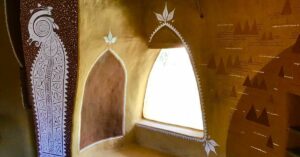Built Amid a Canopy of Trees, This Sustainable Mud Home Is Made with 4000 Plastic Bottles
Built by architect Vinu Daniel, ‘Chuzi’ is a sustainable home made with mud, old plastic bottles, and many other eco-friendly elements.
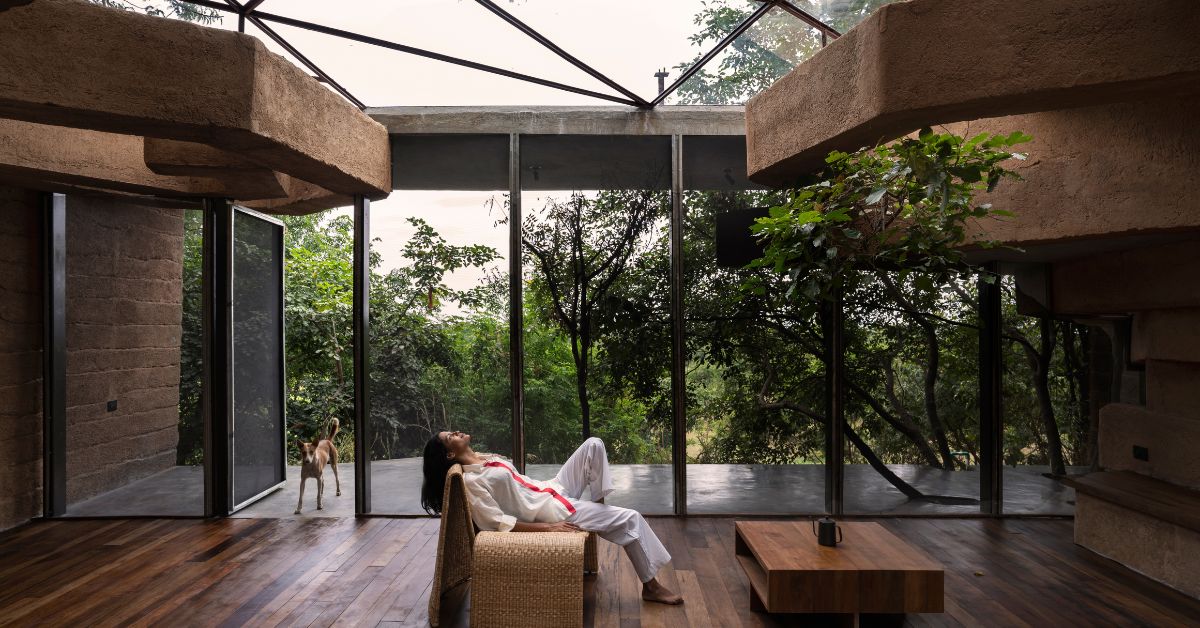
In 2020, architect Vinu Daniel — founder of Wallmakers, an award-winning architectural firm that lays focus on building sustainable spaces — was approached with a strange request. The owners of Sanctity Ferme, a farmland plot in Tamil Nadu, were looking to have residential spaces built to accommodate guests.
As Vinu explains, “Situated in a gated community, the place is in a picturesque location Shoolagiri and the owner was in a fix as there were unwanted obscure plots at the periphery of the community.” He goes on to elaborate that these plots were characterised by steep rocky topography, huge trees and thick vegetation, making people reluctant to make homes there.
“The buildable area seemed less.”
However, what many would presume to be a dead end, Vinu saw as a challenge to overcome — a potential sustainable property that could be built without disrupting the nature around.
Today, the result of his ideation, coupled with a seasoned know-how of sustainable architectural practices, stands in the form of ‘Chuzhi’, a 2122 sq-ft architectural masterpiece against the backdrop of the Tamil Nadu skies.
The magic of camouflage architecture
What was previously deemed an “odd site” and one “unsuitable for construction” by the people of the area is now a sprawling two bedroom plot ready to welcome its guests. Elaborating on how the art of camouflaging works well in architecture, Vinu says it is apt for the present day, where people are obsessed with achieving beautiful scenic views from their homes.
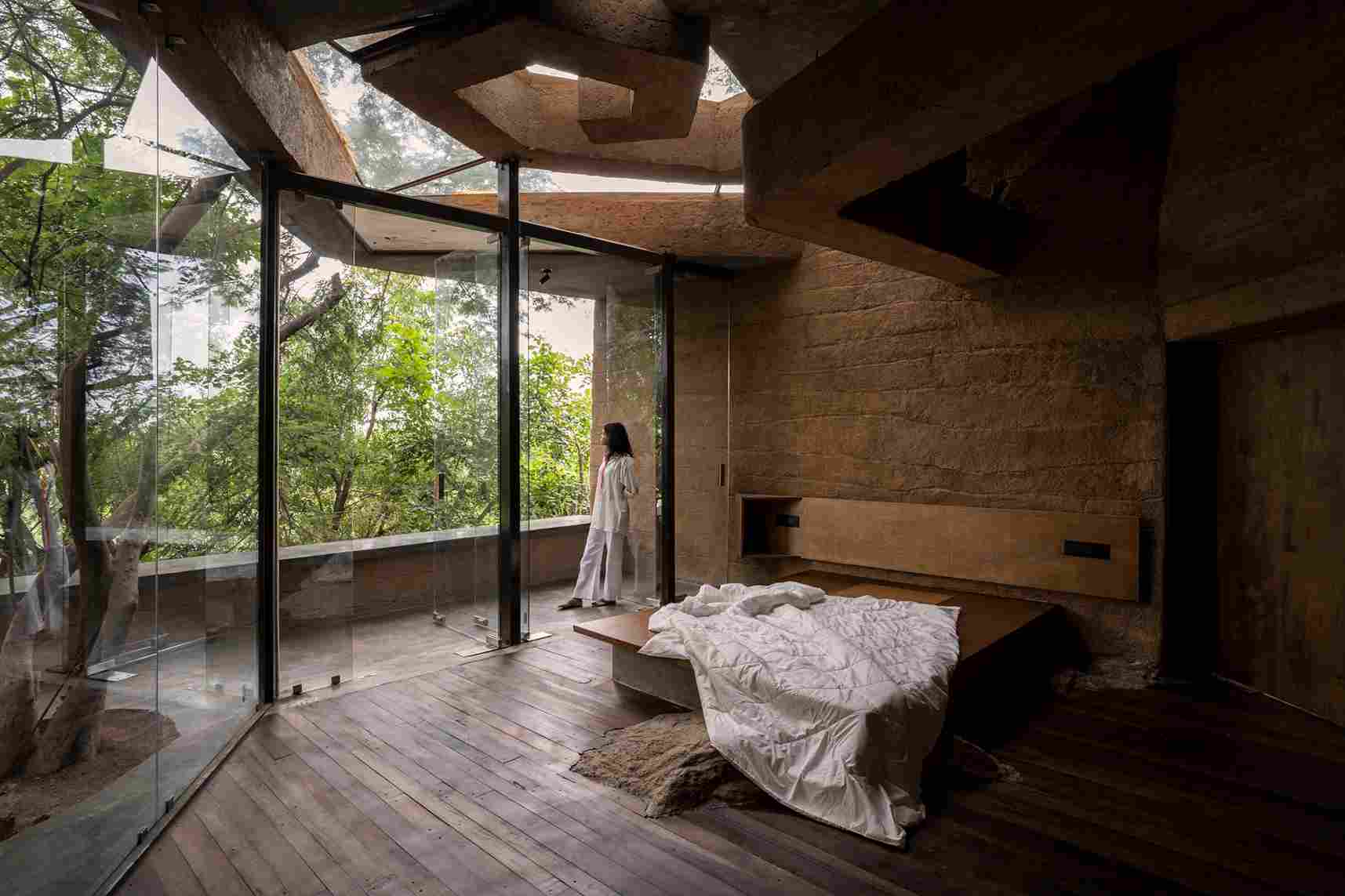
“But the houses end up looking like unnatural eyesores in virgin beautiful landscapes,” says Vinu, adding that through the camouflaging concept, buildings can stay hidden and merge seamlessly with the existing topography.
What is more intriguing is the way in which Chuzhi blends in seamlessly with its surroundings, almost intertwined with the tamarind trees. Vinu points out that in contrast to other projects, spontaneity played a great role in this one, especially when it came to designing a space while being mindful of the trees.
“Usually we make a series of detailed drawings and then start, but in this case, when we saw the trees and their way of spreading, we knew we’d have to design the swirls on site.”
How tough was this?
“Ironically, it was challenging as well as easy,” says Oshin, an associate architect at Wallmakers, also involved in the project. “It was easy because the trees lent the design, and challenging because one had to be mindful that there would be numerous changes along the way to which we had to be open. We could never be sure of the look of the final project.”
To ensure that the construction of the roof did not interfere with the foliage of the tamarind trees, the team chose a unique design. As Vinu points out, the real beauty of the home lies here.
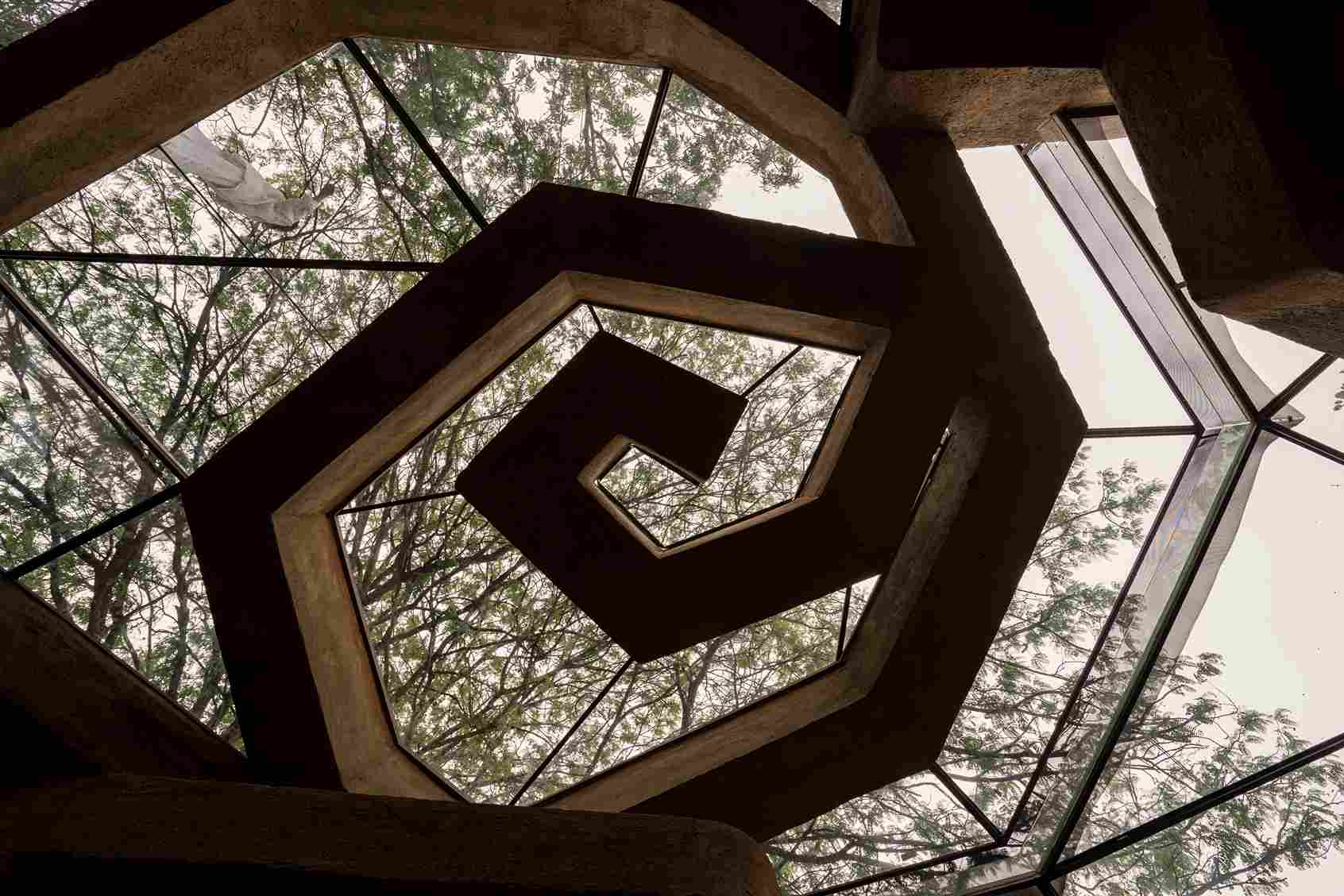
Chuzhi: A whirlpool
“In Malayalam, ‘chuzhi’ means ‘whirlpool’,” explains Vinu. The home’s name stems from the swirls present in the ceiling. These are precast poured debris earth composite bottle beams, fashioned from 4,000 discarded plastic bottles.
Recounting an interesting anecdote that led to this one-of-a-kind design, Oshin says whilst visiting the site for completing the project, they’d often pass an auditorium on the outskirts of the property.
“Weddings and other functions were a common sight here. Naturally, plastic bottles were a common occurrence and we’d witness the amount of trash. So, we thought let’s use this in our construction!”
So, every week the team would collect these bottles, fill them with earth and cast them. Rods were then run through these bottles creating swirls which were then used to make the ceiling. The idea, says Vinu, was to make a subterranean home that would originate from the rock bed, forming multiple whirls around the tree and adjoining to create a secure private space below for the residents, whilst also creating a space around the trees above that ensures that the thick vegetation and ecosystem continues to thrive undisturbed.
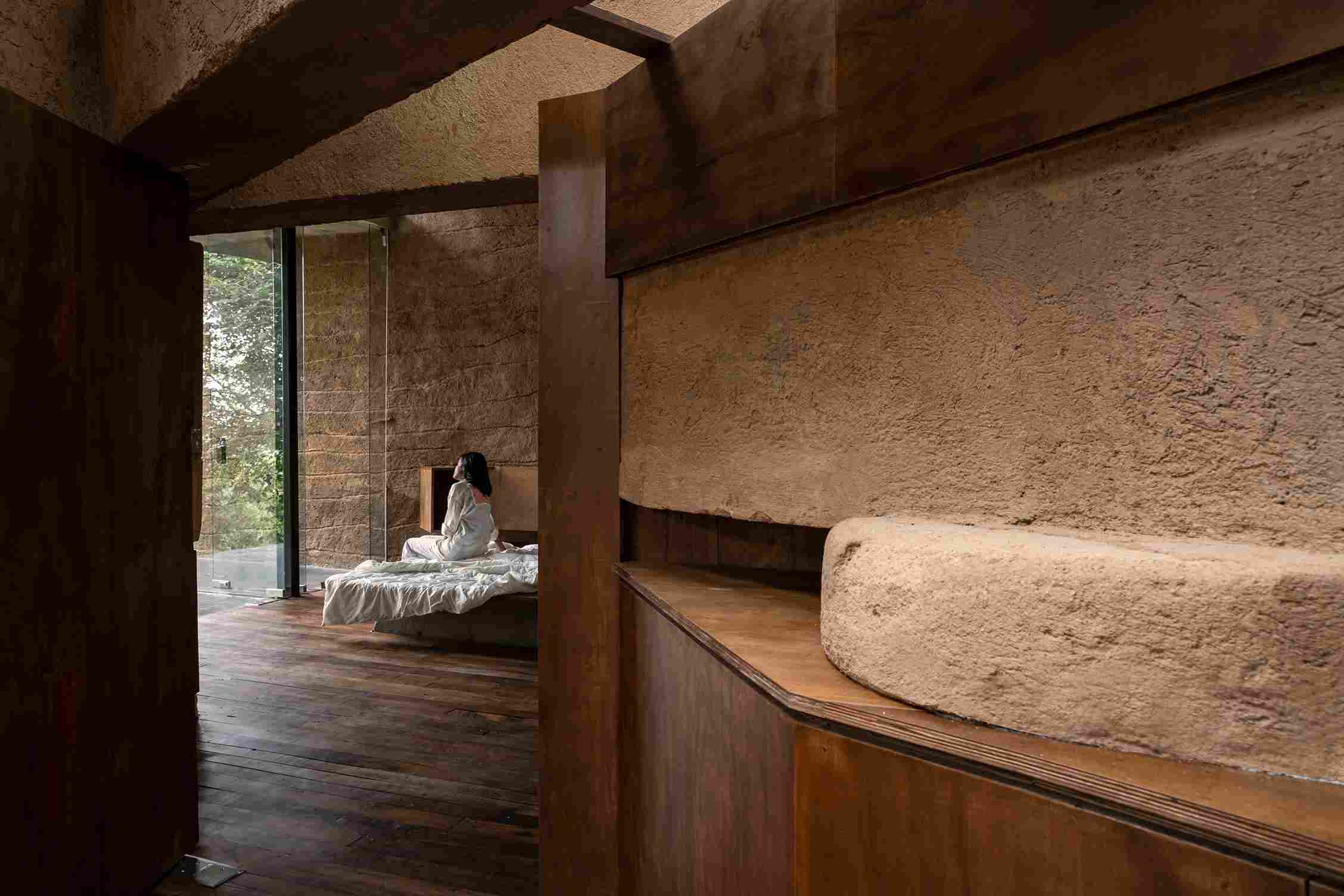
He further elaborates, “The swirls of Chuzhi start as walls and spiral all the way up to form the roof. Perched between the three trees, the house has been designed with a glass roof to give you the feeling of living underneath the canopy of trees.”
A secret space to unwind
When it comes to this home nestled away in its own miniature forest, Vinu says that while constructing, there was also a need to properly define the public space from the private space as the house does not have any form of elevation that does so.
Here, he interjects, revealing another surprise.
“The roof doubles up as a seating area around the tree. Whenever we think of trees, we think of the shade they provide, and love sitting under them, as well as wanting to be in close proximity to the foliage. And so we thought creating this seating would be a good idea.”
This also plays a role in keeping the house performing optimally in different climates.

The steel mesh used in the construction ensures cross ventilation, while mud insulation ensures the home remains warm in winters. The air gaps present throughout the construction ensure the home is well ventilated.
Chuzhi is a sustainable dream come true, with its mud walls that comprise 5 percent cement and flooring done with reclaimed pieces of old wood pieced together.
Meanwhile, the team behind this architectural marvel says it was as challenging as it was stimulating. “Architects are so adapted to making a plan and knowing their design philosophy and following it. But this project was an example of how sometimes, you just need to let certain elements aid your process and guide your sense of design. In this case it was the nature around,” says Oshin.
Vinu adds, “The idea was to allow the natural ecosystem of trees and the surroundings to be retained as it is above the house, without compromising on the comfort of the inhabitants.”
Today, the two-bedroom residence, with its open layout and minimalistic interiors, is an irony in itself. While giving onlookers an impression of an open space intertwined with nature, it manages to tuck itself away into the landscape like a snake curling up under a rock on a hot day.
Edited by Divya Sethu
If you found our stories insightful, informative, or even just enjoyable, we invite you to consider making a voluntary payment to support the work we do at The Better India. Your contribution helps us continue producing quality content that educates, inspires, and drives positive change.
Choose one of the payment options below for your contribution-
By paying for the stories you value, you directly contribute to sustaining our efforts focused on making a difference in the world. Together, let's ensure that impactful stories continue to be told and shared, enriching lives and communities alike.
Thank you for your support. Here are some frequently asked questions you might find helpful to know why you are contributing?


This story made me
-
97
-
121
-
89
-
167




